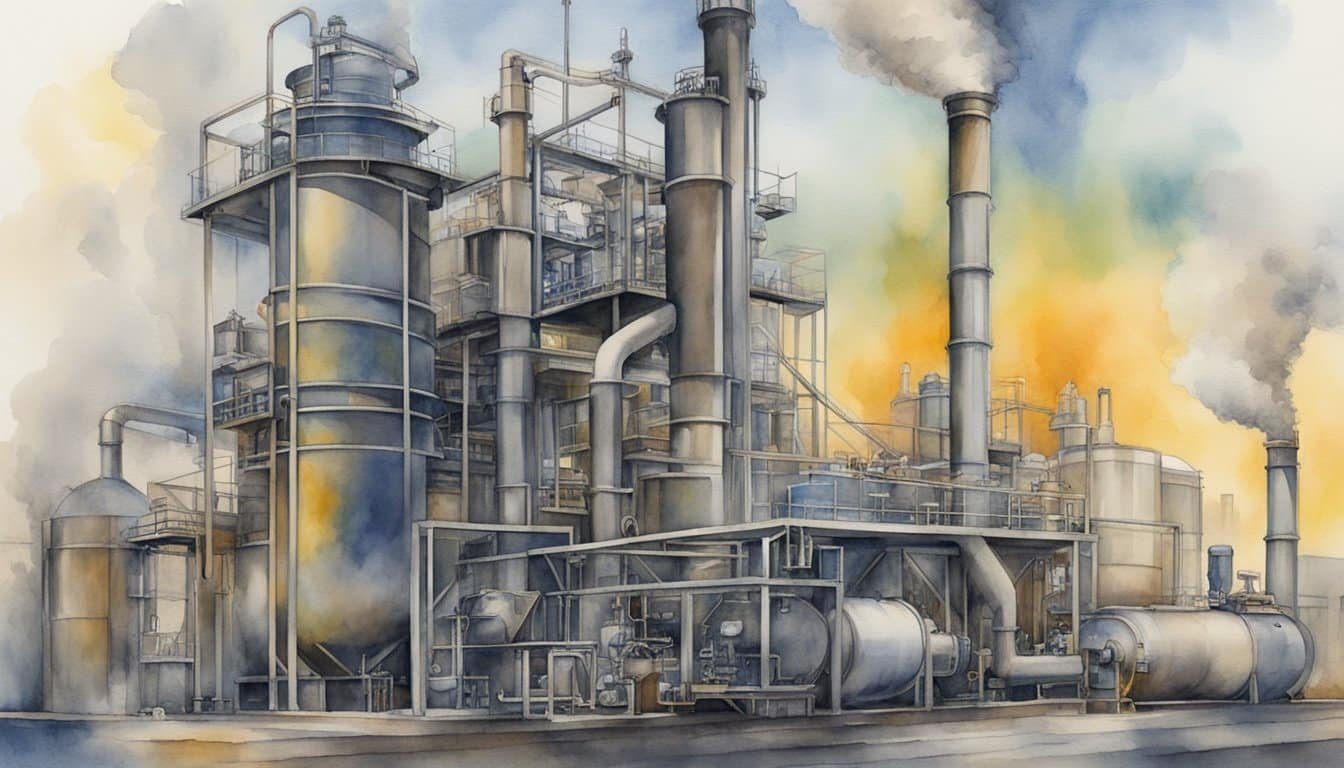Fundamentals of Catalyst Chemistry
The dance floor of chemistry is always lively with molecules reacting to form new products, and catalysts are the DJs. These unseen movers and shakers can make chemical reactions zip along faster or take a different path altogether.
Understanding Catalysts
Catalysts are the unsung heroes in the realm of chemical reactions. They work by providing an alternative pathway for the reaction, one that has a lower activation energy than the uncatalyzed pathway. This means that less energy is required to get the reaction going. Catalysts are not consumed in the reaction—they emerge unchanged once the new products are formed. They are crucial in processes like the synthesis of pharmaceuticals, where precise control over the reaction is necessary. For insights on the role of catalysts in industrial processes, the book “Fundamentals of industrial catalytic processes” is a handy resource.
Types of Catalysts
In the bustling world of catalysts, there are mainly two types: heterogeneous and homogeneous. Heterogeneous catalysts are in a different phase than the reactants—think solid catalysts mingling with liquid reactants. One can dive into the specifics of these types in the publication “Heterogeneous catalytic chemistry by example of industrial applications.” On the flip side, homogeneous catalysts share the same phase as the reactants, like a guest dissolving into the cocktail of reactants and gliding among them to facilitate reactions.
Role of Energy in Catalysis
Energy is key when talking about reactions and catalysts. Activation energy is the gatekeeper to the start of a chemical reaction, dictating the reaction rate. Catalysts cleverly bypass the need for high activation energy, allowing reactants to convert to products with relative ease and speed. This is why catalysis is vital in industries where time is money and speed is a game-changer. The role of energy in catalysis is paramount—it’s the difference between waiting eons for a reaction to happen and getting results in the blink of an eye.
Catalytic Materials and Mechanisms

Catalysts are the unsung heroes in the realm of chemistry, facilitating reactions without being consumed. They operate through mechanisms that can sometimes seem like magic, transforming reactants into products with ease and precision. Now, let’s hop into the different protagonists of this molecular theater.
Metals and Metal Alloys
Metals like platinum, nickel, and palladium are the rock stars of catalytic materials, often used in reactions such as hydrogenation where they help in breaking down molecules. Platinum, for instance, is a key player in catalytic converters, turning toxic automobile exhaust into less harmful substances. Metal alloys, which blend multiple metals, can enhance the effectiveness and durability of catalysts. Unique properties arise when metals like aluminum or silicon join the party, offering increased selectivity in reactions or resistance to catalyst poisons that would otherwise hamper the process.
Enzymatic Catalysis
Nature’s very own catalysts, enzymes, are a class apart, performing complex biological reactions with remarkable specificity. They operate under mild conditions and demonstrate incredible selectivity, often using polymers and organic compounds as substrates. By manipulating chemical bonds, these biocatalysts can churn out products that would be challenging to replicate in a lab, with some enzymes even capable of tackling the production of sulfuric acid carefully and precisely.
Heterogeneous vs. Homogeneous Catalysis
Dive into the diverse world of catalytic action: on one hand, heterogeneous catalysts are solids like zeolites or vanadium(V) oxide that often anchor themselves onto surfaces, pulling in reactants through adsorption. They’re solid team players, often found in fixed positions, like in the gritty surface of an alumina support, or tucked within the pores of a zeolite. These solid catalysts can be recovered and reused, and they’re champions in processes like the breakdown of harmful pollutants in those crucial catalytic converters.
Flip to homogeneous catalysts, and you meet molecules that play in the same phase as their reactants; it’s a synchronized swimming act where everything mixes seamlessly. They tackle reactions in solutions, swooshing around and often offering better control over reaction mechanisms. But, these liquid-phase catalysts are a bit high-maintenance; separating them out for reuse can feel like trying to get glitter off your hands.
From the efficient decomposition of complex molecules to navigating the twists and turns of an energy diagram, catalytic materials and their mechanisms are a testament to the ingenuity of both nature and human innovation. They don’t just speed things up; they lower the energy barrier, making it easier for a reaction to proceed and often saving energy and resources in the process. Their work in acid catalysis and base catalysis is pivotal, whether it’s in the fine-tuning of pharmaceuticals or the production of everyday materials. With transition metals and iridium coming into play, catalytic chemistry continues to push the frontiers of what’s possible, making it an exciting space to keep an eye on!
Catalysts in Industry and Environment

Catalysts play a vital role in numerous industrial processes and environmental protection efforts. They serve to accelerate chemical reactions, often making the economically and thermodynamically favorable outcomes possible while also aiding in the reduction of harmful emissions.
Catalysis in Industrial Processes
In industrial settings, catalysts are essential for the efficient production of various chemicals and materials. For instance, they are key to the process of catalytic hydrogenation, which turns liquid vegetable oils into solid margarine by adding hydrogen in the presence of a catalyst. Catalysts also enable the large-scale synthesis of hydrogen peroxide, a reaction that relies on the controlled addition of oxygen. The rate of reaction is crucial for achieving high yield and can be influenced by using specific heterogeneous catalysis methods, where the catalyst is in a different phase than the reactants.
When discussing industrial processes, the term “turnover number” is often used to describe how many times a catalyst can facilitate a specific reaction before being regenerated. This illustrates the efficiency and durability of a catalyst within a given process.
One notable example of a catalyst that changed the game is graphitic carbon nitride, used in fuel cells to harness the energy from the reverse reaction of combining hydrogen and oxygen to produce water and electricity.
Catalysts for Environmental Protection
Catalysts are also pivotal in environmental protection. Catalytic converters, a type of heterogeneous catalysis, are devices installed in vehicles that convert harmful exhaust gases like nitric oxide and carbon monoxide from an engine into less harmful substances such as nitrogen and carbon dioxide.
Moreover, catalysts are critical in reducing ultraviolet radiation damage by enabling the destruction of ozone-depleting substances, such as certain chlorine compounds. The catalytic breakdown of these compounds prevents them from reaching the upper atmosphere where they could cause harm.
In another application, enzymes, nature’s catalysts, play a genetic role in breaking down pollutants. These biological catalysts can enhance the rate of reaction for environmentally-friendly processes, making them thermodynamically favorable and prevent the possibility of equilibrium that would halt the process.
Catalysts, whether synthetic or natural, work tirelessly like a genie in a bottle—they can achieve astounding feats without getting consumed in the process. Elizabeth Fulhame, an early researcher in the field, discovered that certain substances could act as both an inhibitor and a promoter of chemical reactions, introducing the world to concepts that would underpin catalysis in modern chemistry.

